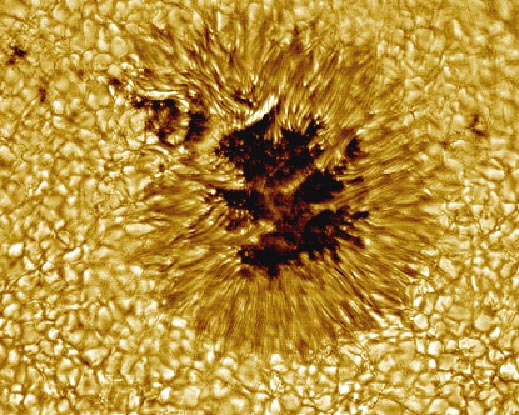Explanation: Sometimes, small regions of the Sun appear unusually dark. Visible above is a close-up picture of a sunspot, a depression on the Sun's face that is slightly cooler and less luminous than the rest of the Sun. The Sun's complex magnetic field creates this cool region by inhibiting hot material from entering the spot. Sunspots can be larger than the Earth and typically last for only a few days. This high-resolution picture also shows clearly that the Sun's face is a bubbling sea of separate cells of hot gas. These cells are known as granules. A solar granule is about 1000 kilometers across and lasts about 10 minutes. After that, many granules end up exploding.
1999 2000 2001 2002 2003 2004 2005 2006 2007 2008 2009 2010 2011 2012 2013 2014 2015 2016 2017 2018 2019 2020 2021 2022 2023 2024 2025 |
Yanvar' Fevral' Mart Aprel' Mai Iyun' Iyul' Avgust Sentyabr' Oktyabr' Noyabr' Dekabr' |
NASA Web Site Statements, Warnings, and Disclaimers
NASA Official: Jay Norris. Specific rights apply.
A service of: LHEA at NASA / GSFC
& Michigan Tech. U.
|
Publikacii s klyuchevymi slovami:
Sun - granules - sunspot - Solnechnye pyatna - magnitnoe pole Solnca - granulyaciya, solnechnaya
Publikacii so slovami: Sun - granules - sunspot - Solnechnye pyatna - magnitnoe pole Solnca - granulyaciya, solnechnaya | |
Sm. takzhe:
Vse publikacii na tu zhe temu >> | |
